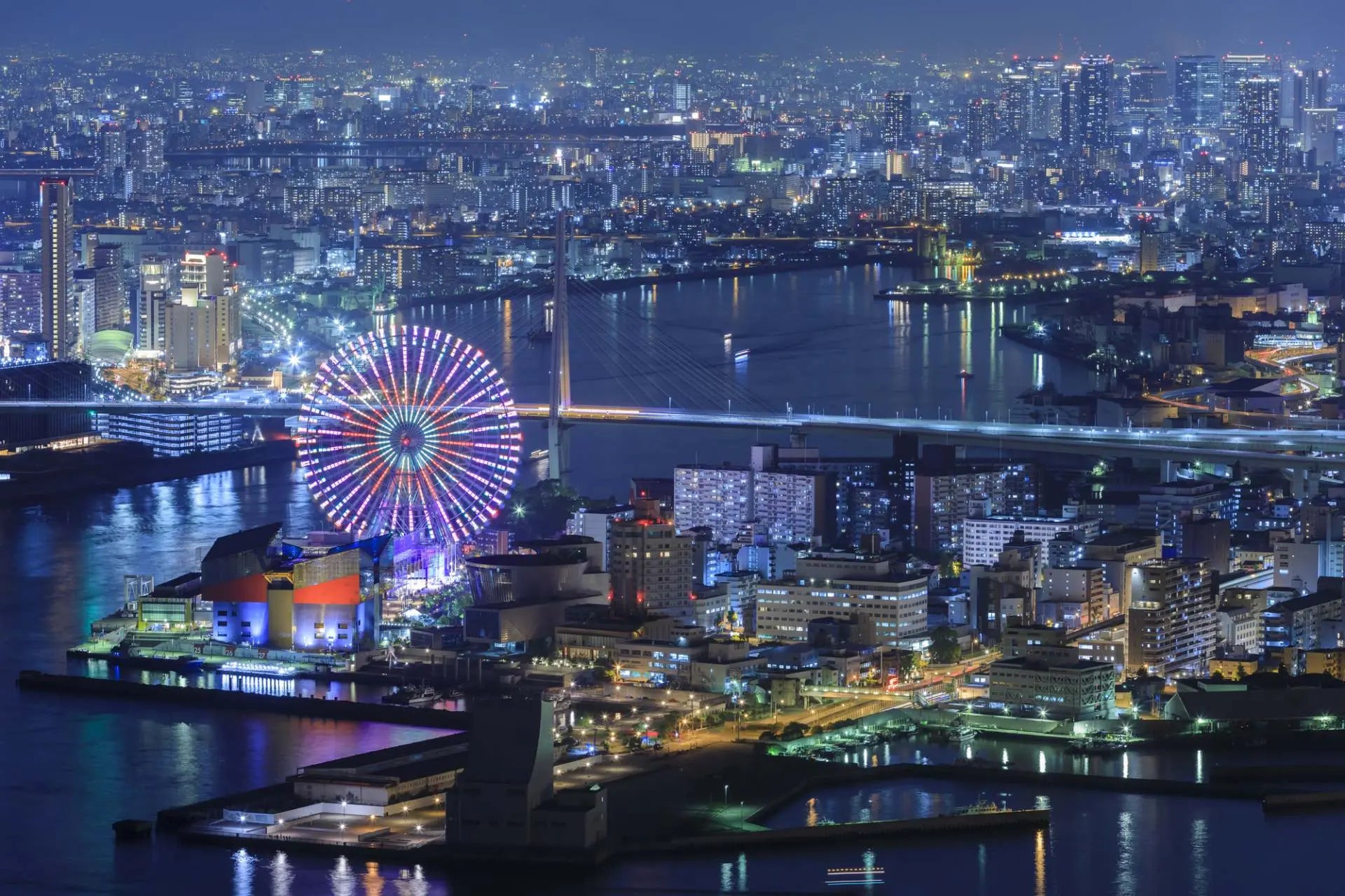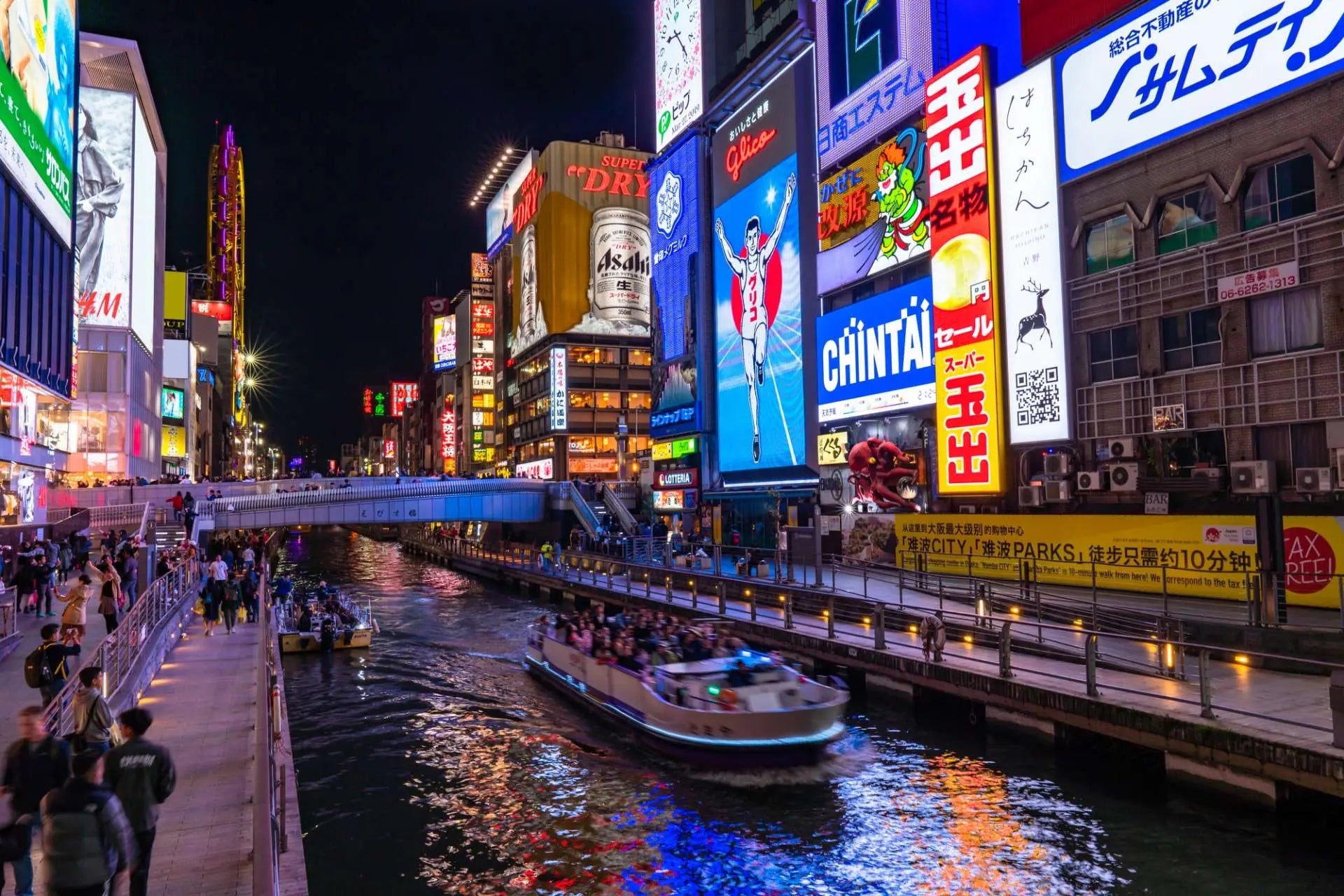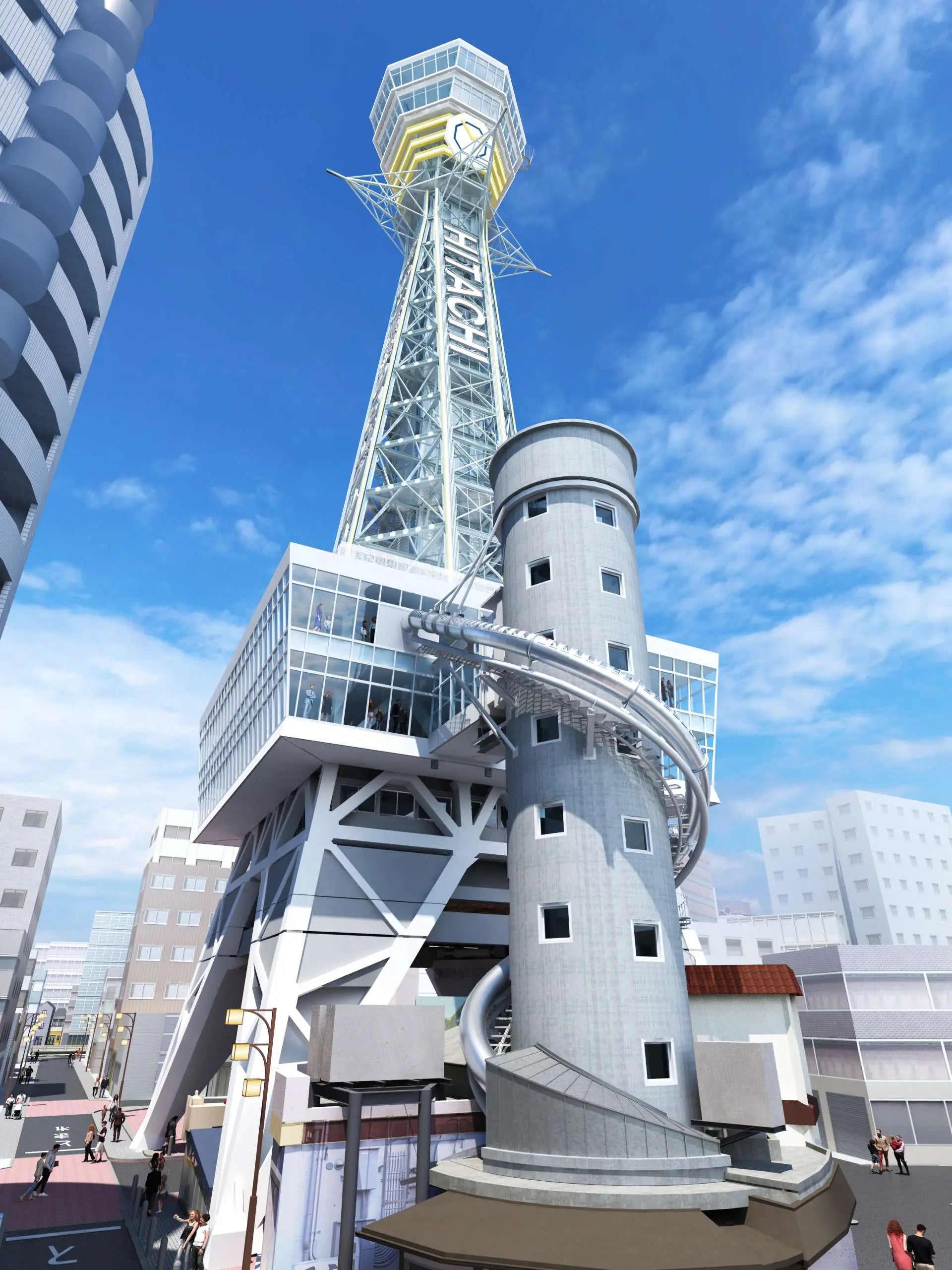
The major Japanese city of Osaka boasts numerous charming sightseeing spots and unique local cuisine. This article will introduce must-visit spots, unmissable food, great shopping areas, recommended accommodations, must-buy souvenirs, and various festival events for those visiting Osaka for the first time. We wish you a wonderful trip to Osaka.
Table of Contents
- What Kind of Place is Osaka?
- What are the Main Tourist Areas in Osaka?
- 19 Must-Visit Spots in Osaka
- 9 Must-Eat Famous Restaurants in Osaka
- 7 Must-Visit Shopping Spots in Osaka
- 5 Recommended Accommodation Facilities in Osaka
- 5 Must-Buy Souvenirs from Osaka
- Must-See Festivals and Events in Osaka (Spring, Summer, Autumn, Winter)
- Standard Osaka Itinerary (3 Days, 2 Nights)
- Frequently Asked Questions About Osaka Sightseeing
- Conclusion
What kind of place is Osaka?
Osaka is the largest city in the Kansai region and the second-largest city in Japan.
Historically, Osaka has been known as the “nation’s kitchen” and has flourished as a “city of commerce.”
During the Warring States period, when Toyotomi Hideyoshi unified Japan, he built Osaka Castle. With the castle as its center, powerful figures and merchants gathered, and Osaka quickly grew into the economic heart of the country.
In the Edo period, thanks to its numerous rivers and canals, Osaka became a vital transportation hub. Its rich agricultural production and the gathering of ingredients from across Japan led to the development of its distinct food culture, solidifying its reputation as the “nation’s kitchen.”
Today, Osaka is still renowned as a “gourmet city,” with the vibrant Dotonbori district offering countless delicious options, including local specialties like takoyaki and okonomiyaki (flour-based dishes). Beyond its food scene, Osaka is a major tourist destination in Japan, featuring popular attractions such as Universal Studios Japan and the Kaiyukan Aquarium, Kuromon Market where fresh ingredients can be found, Abeno HARUKAS with its panoramic city views, and the ancient Shitennoji Temple, among many other appealing sights.

What are the main tourist areas in Osaka?
Osaka, a city brimming with tourist attractions and numerous gourmet food spots, is mainly divided into five major sightseeing areas: Kita (Umeda), Minami (Shinsaibashi, Namba, Dotonbori), the Bay Area, the Osaka Castle Area, and the Tennoji Area (Shinsekai, Abeno). Each area has its own unique personality and charm.
1. Kita (Umeda)
Kita (Umeda) refers to the area around JR Osaka Station and Umeda Station and is a major bustling downtown area representing Osaka. Examples include “GRAND FRONT OSAKA,” which houses approximately 260 shops; “Hankyu Department Store Umeda Main Store,” a long-established department store representing Osaka and founded in 1929; and “Umeda Sky Building” with its Floating Garden Observatory. Additionally, there’s “Nakanoshima,” an urban oasis surrounded by clear river water and lush greenery.

2. Minami (Shinsaibashi, Namba, Dotonbori)
The Minami area, centered around Namba, is where you’ll find “Dotonbori,” representing Osaka’s famous foods like takoyaki and okonomiyaki, and “Shinsaibashi,” a shopper’s paradise with the Glico Running Man sign as its landmark. Everywhere you go in this area, you can feel the unique atmosphere of Osaka. It’s an absolute must-visit for anyone coming to Osaka for the first time.

3. The Bay Area
The Osaka Bay area is home to many popular and well-loved entertainment facilities. These include “Universal Studios Japan (USJ),” a famous amusement park representing Osaka and even Japan; “Kaiyukan Aquarium,” with its massive 5,400-ton main tank; the world’s largest “Tempozan Ferris Wheel”; and “LEGOLAND Discovery Center Osaka,” a must-visit for Lego enthusiasts. It’s a great place for family outings. At night, you can also enjoy the captivating night view of the entire bay area from the “Sakishima Cosmo Tower Observatory.”

4. The Osaka Castle Area
Centered around “Osaka Castle” and “Osaka Castle Park,” this area is home to many historical attractions where you can feel Osaka’s cultural atmosphere, including various history museums and buildings designated as Important Cultural Properties. Taking a ride on the “Osaka Castle Gozabune” to tour around Osaka Castle or enjoying Osaka’s traditional architecture and natural scenery from the river on the “Osaka Water Bus Aqua-Liner” are both excellent choices.
In addition, cherry blossom viewing spots like the “Osaka Mint Bureau,” known for its beautiful cherry blossoms in spring, are also highly recommended.

5. Tennoji Area (Shinsekai, Abeno)
Located near the Minami area mentioned above, the Tennoji area is home to “Shinsekai,” with the “Tsutenkaku Tower” as its landmark. This district is filled with local pubs and small eateries where you can enjoy Osaka’s local specialties like kushikatsu (deep-fried skewers) at very reasonable prices. Additionally, you’ll find “Abeno HARUKAS,” Japan’s tallest building (reaching 300 meters), offering panoramic views of Osaka city from its top observatory.
Osaka7
What is the best season for sightseeing in Osaka?
Osaka has a warm and pleasant climate throughout the four seasons, making it easy to enjoy sightseeing at any time of year. If you love cherry blossoms, choose spring; if you enjoy Japanese festivals, you can have a fun summer trip in Osaka; and winter offers various enchanting illumination events.
Osaka Seasonal Clothing Guide
Spring (March - May): Light coats, thin sweaters Summer (June - August): Light tops, short-sleeved shirts Autumn (September - November): Light coats, coats Winter (December - February): Coats, sweaters, thick sweaters, jackets
How to get to Osaka? What is the transportation within Osaka city?
The central area of Osaka is located close to Kansai International Airport and Shinkansen (bullet train) stations, making it very convenient to travel to various parts of Japan or fly overseas from Osaka.
Osaka has a very well-developed transportation network, and you can easily reach various tourist attractions by train or taxi.
The main mode of transportation for sightseeing within Osaka city is the train, including JR and various subway lines. Combining this with other transportation options like taxis makes getting around very convenient. If you’re traveling independently, purchasing the cost-effective tourist pass “Osaka Amazing Pass” is highly recommended. It not only allows you to ride trains and buses in the main tourist areas for free but also grants free admission to famous attractions such as Osaka Castle Keep and Tsutenkaku Tower, and you can also receive various discounts!
Must-Visit Spots in Osaka
Osaka has so many great spots worth visiting, from leisure facilities like amusement parks and aquariums to shrines and castles where you can feel Japan’s history, as well as various shopping streets and markets that you absolutely can’t miss if you want to enjoy Osaka’s delicious food.
Next, we will carefully select 19 of the most classic spots from Osaka’s many attractions to recommend to you.
1. Universal Studios Japan
Universal Studios Japan, affectionately known as USJ, is a large-scale theme park enjoyed by people of all ages. The park is divided into different areas based on unique themes, bringing together world-class entertainment facilities. You can experience a multitude of diverse and interesting entertainment worlds all at once. In particular, the new area themed around Nintendo characters and their world, “Super Nintendo World,” is extremely popular.

2. Osaka Castle Keep
Toyotomi Hideyoshi, who nearly unified Japan during the Azuchi-Momoyama period (1568-1600), began construction of Osaka Castle in 1583, and the castle keep (Tenshukaku) was completed in 1585.
The interior of the Osaka Castle Keep serves as a history museum. The permanent exhibition includes a “Miniature Model of the Summer Campaign,” which vividly recreates the battle scenes depicted in the “Osaka Summer Campaign” folding screen painting. It also displays a full-scale replica of the golden teahouse that Toyotomi Hideyoshi cherished.

3. Osaka Castle Park
This is a vast urban park centered around the nationally designated special historic site, the “Osaka Castle Ruins.”
Within its expansive grounds, covering 105.6 hectares, numerous important historical and cultural properties are scattered, including the Osaka Castle Keep and a total of 13 structures such as turrets and gates built from the early to late Edo period. In spring, it is also a prominent cherry blossom viewing spot representing Osaka.

4. Dotonbori
Osaka’s Dotonbori is a lively area created by various large three-dimensional signs protruding from buildings, depicting crabs, octopuses, cows, cranes, and more. Numerous restaurants and shops line both the Dotonbori River flowing on the north side and the main street on the south side. The main street is a pedestrian zone, where you can see many people walking around while enjoying local foods like takoyaki.

5. Abeno HARUKAS
Abeno HARUKAS stands at 300 meters tall and is the tallest multi-purpose building in Japan.
The “HARUKAS 300” observatory comprises three floors: the 58th, 59th, and 60th. From the 16th-floor entrance, you take a dedicated elevator to the top 60th floor, where you can experience a surprising space that feels like walking in the sky in an indoor corridor with glass from the floor to the ceiling.
On clear days, you can even see a panoramic view stretching from Kyoto to Mount Rokko, the Akashi Kaikyo Bridge to Awaji Island, and Mount Ikoma.

6. Kaiyukan Aquarium
Showcasing a total of 620 species and 30,000 marine creatures, this is one of the world’s largest aquariums. The interior recreates the natural landscapes surrounding the Pacific Ocean, housing 620 species and approximately 30,000 living creatures.
The most spectacular highlight is the “Pacific Ocean” tank, where large sharks like whale sharks and rays coexist. Watching the fish swim leisurely in this enormous tank, which is 9 meters deep, has a maximum length of 34 meters, and holds 5,400 tons of water, gives you a wonderful feeling as if you are also in the ocean.

7. Tsutenkaku Tower
This observation tower consists of a special outdoor observation deck, as well as 5 above-ground floors and 1 basement floor. On the 5th floor, 87.5 meters above ground, is the gold-decorated “Golden Observation Deck,” where the guardian deity “Billiken” is enshrined. It is said that rubbing the soles of this guardian deity’s feet brings good luck. The current “Billiken” statue is the third generation and is characterized by its golden hair.
Located at the very top of Tsutenkaku, 94.5 meters high, is the special outdoor observation deck “Tenbo Paradise.” The corridor here is 8.5 meters in diameter, and it also features a cantilevered observation platform with a glass see-through floor called “TIP THE TSUTENKAKU.”

8. Shinsekai Hondori Shopping Street
The shopping street stretching from Exit 3 of Ebisucho Station on the Osaka Metro Sakaisuji Line to Tsutenkaku Tower is called “Tsutenkaku Hondori Shopping Association.” The street is lined with retro-style cafes and local food restaurants serving okonomiyaki and takoyaki, and it’s also the best area for viewing Tsutenkaku Tower.
The south side of Shinsekai Hondori Shopping Street has a concentration of kushikatsu (deep-fried skewers) restaurants with the “no double dipping” rule. Many of these local eateries feature exaggerated and brightly colored three-dimensional signs and banners that catch the eyes of passing tourists.

9. Shitennoji Temple
Shitennoji Temple was built in 593 by Prince Shotoku, known as the “father of Japanese Buddhism.” After the Heian period, people’s reverence for Prince Shotoku transformed into religious faith, making Shitennoji a sacred site for his worship. To this day, it is deeply revered as the head temple of the Washu sect.
The temple layout within Shitennoji’s grounds is known as the “Shitennoji-style temple layout” and is widely recognized as one of Japan’s oldest architectural styles. Although it has suffered significant damage from numerous disasters and wars, it has been repeatedly rebuilt through the efforts of local residents, making it a temple deeply cherished by the people of Osaka.

- Tempozan Ferris Wheel
The Tempozan Ferris Wheel stands at 112.5 meters tall with a diameter of 100 meters, and one rotation takes 15 minutes, making it one of the world’s largest Ferris wheels.
On clear days, you can see the Ikoma Mountains of Nara Prefecture to the east, the Akashi Kaikyo Bridge in Hyogo Prefecture to the west, Kansai International Airport to the south, and the Rokko Mountains 1 of Hyogo Prefecture to the north. Being in Osaka allows you to experience the wonderful feeling of touring the entire Kansai region.

The major sightseeing spots and gourmet restaurants introduced above are perfect for tourists visiting Osaka for the first time. Since Osaka has so many fun, delicious, and great shopping spots, it’s recommended that first-time visitors take a standard Osaka itinerary and then explore Osaka’s hidden gems and also visit nearby tourist destinations like Kobe or Kyoto on their second and subsequent visits.
If you have enough time, it’s also suggested that you take the Shinkansen (bullet train), which takes about 2 hours and 30 minutes, to visit Nagoya, the largest city in the Chubu region, for a fun trip.






























